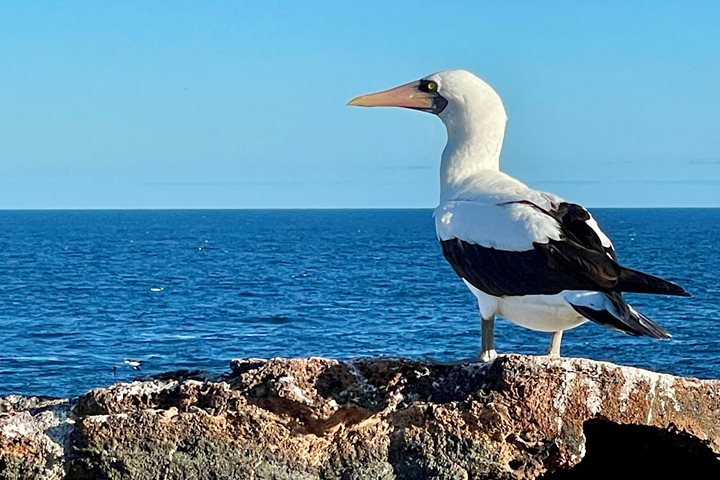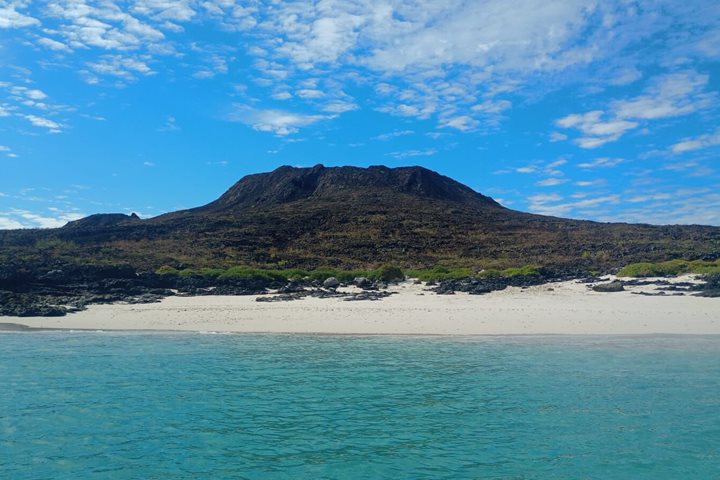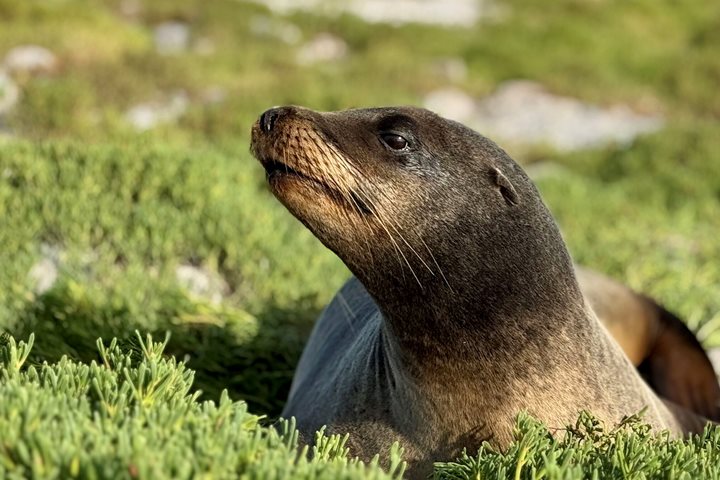The morning was very warm with calm seas; we went out early to explore the shoreline on kayaks in search of penguins. Some of our guests enjoyed some stretching on the beach where some sea lions were playing.
After breakfast, we did water activities. The snorkeling was spectacular, for our guests spotted sharks, manta rays, and other marine life around the turquoise bay of Chinese Hat Islet. The glass-bottom boaters also enjoyed the journey. In the afternoon, we moved to Sullivan Bay on Santiago Island. We walked on a pahoehoe lava field to learn about the geology of Galapagos. The lava is a magical natural museum in front of our eyes. While riding in the Zodiacs on our way back to the ship, we found a flock of penguins and some blue-footed boobies; those sightings were the frosting on the cake for an astonishing day exploring the Galapagos Islands.







